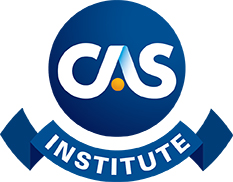 Not surprisingly, one of the many things I’m helping with, in my month-old position as CAS Staff Actuary, is the development of The CAS Institute and its credentialing programs, beginning with a data science and predictive analytics credential. This is an initiative for which I was delighted to have cast an approving vote last year as a CAS Board member, and it could end up being one of the most important new enterprises the CAS has undertaken in a long time.
Not surprisingly, one of the many things I’m helping with, in my month-old position as CAS Staff Actuary, is the development of The CAS Institute and its credentialing programs, beginning with a data science and predictive analytics credential. This is an initiative for which I was delighted to have cast an approving vote last year as a CAS Board member, and it could end up being one of the most important new enterprises the CAS has undertaken in a long time.
Our profession is a multidisciplinary one – that is the source of both its strength and its challenge. Certainly, the development and implementation of The CAS Institute requires a multidisciplinary approach, and the project team is extensive and multifaceted. It’s a large undertaking, involving many CAS members, non-members, and staff. To give you a flavor for the extent of this effort, here are just a few of the tasks and activities underway for our initial credential:
- Subject matter expertise: laying out the predictive analytics curriculum and learning objectives. A number of experienced and insightful people are engaged in this effort.
- Exams and education: considering how best to educate candidates and verify required skills.
- Marketing and communications: devising strategies and delivering messages. Note that there are a number of important and interested audiences to address – CAS members, non-CAS actuaries, statisticians, employers, etc. – each likely requiring different information and messaging.
- Market intelligence: conducting market research and keeping familiar with others’ offerings in predictive analytics – including university courses and online programs.
- Research: encouraging and soliciting research on predictive modeling concepts, techniques, and case studies.
- Professional education: developing infrastructure to support continuing education opportunities in predictive analytics.
- The future actuary: considering whether and how the subject matter for the predictive analytics credential intersects with what all actuaries will need to know in the future.
- Project management: ensuring thorough and consistent oversight of all of these pieces of the project. A project manager has been hired specifically to coordinate all of this: my capable CAS office colleague Amy Brener.
As much work as there is for us to do in this area, it’s important to keep in mind that predictive modeling, as a basic function, is really something that actuaries have always done. This, I think, is a very important message that we should mention frequently in our interactions with non-actuaries. Amongst ourselves, we all recognize that actuaries have been doing such work – but our knowing something can often mean that we think such a fact is self-evident to others, and thus there’s no need to mention it. Unfortunately, I think this is sometimes why actuaries get left out of discussions: we don’t recognize what others don’t know.
Whenever I used to teach my actuarial classes about the concept of Value at Risk, I always started by mentioning this general idea. VaR gained a foothold in the public consciousness in the 1990s, when JP Morgan was trying to quantify the daily risk associated with its overall investment portfolio. The idea of VaR then took off, both as a standard risk metric and as a consulting tool. But (as I told my students) VaR is nothing new – it’s something that actuaries have done for a hundred years. It’s little more than a percentile, a confidence level. We as actuaries just didn’t have the marketing savvy to slap a sexy name on it (“Value at Risk” is sexy?) and charge millions of dollars in consulting fees to financial institutions for calculating it. (And it’s not even as good a risk measure as many non-actuaries seem to think it is…)
I really think we need to be much more proactive in “staking out claims,” and emphasizing our skills and pedigrees. As the CAS Staff Actuary, I hope to find opportunities to do this on behalf of our society and profession.
So, that’s a quick look at some of the activity underlying the CAS Institute initiative. Here are a few other things I’ve done over the last couple of weeks as your CAS Staff Actuary:
- Auditioned an actuarial joke that someone suggested for posting on our social media outlets. (I gave it the thumbs-down. I love a good joke, but this was… not a good joke…)
- Based on the time-series of CAS membership data included in our recent 7,000th member announcement, used an exponential curve to estimate that the CAS will have over 15 million members by the year 2100. (Now, that’s a good joke!)
- Confirmed that this Staff Actuary gig is a great job, involving exciting projects, wonderful CAS staff, and dedicated CAS members.
All in a day’s work! There’s much going on in the CAS – most of it quite substantive! – and I’ll focus on another important area in my next blog entry. Until then…


